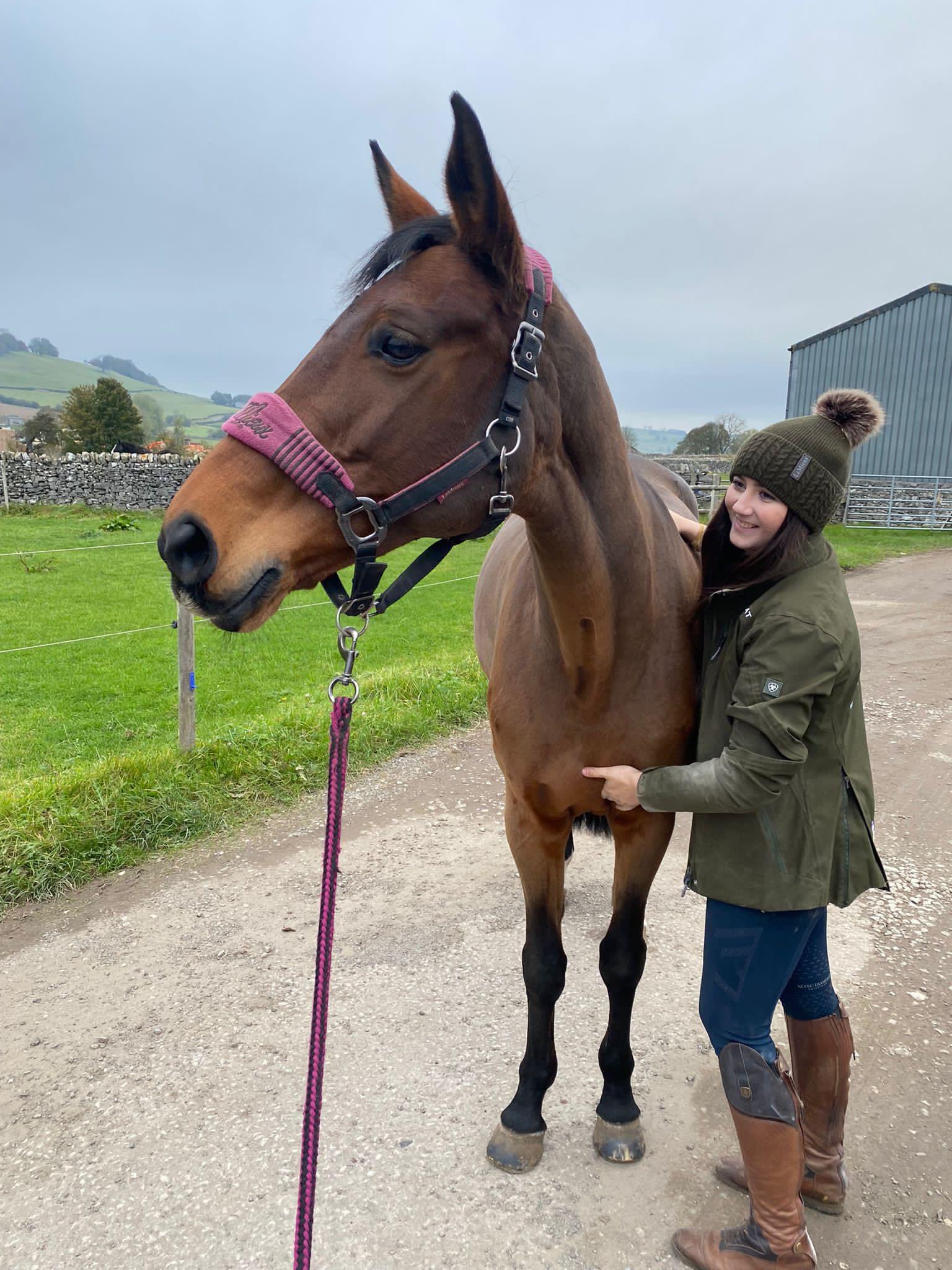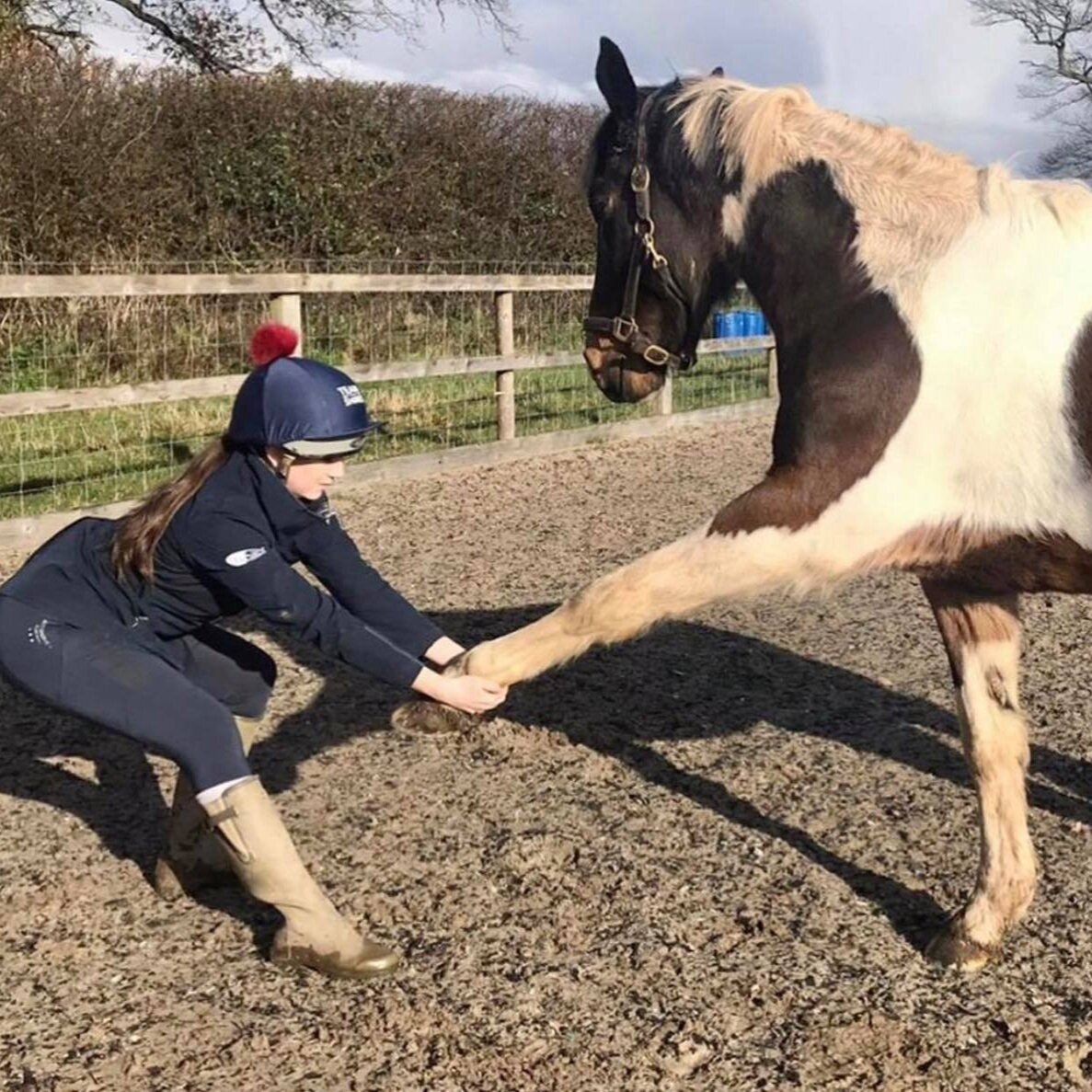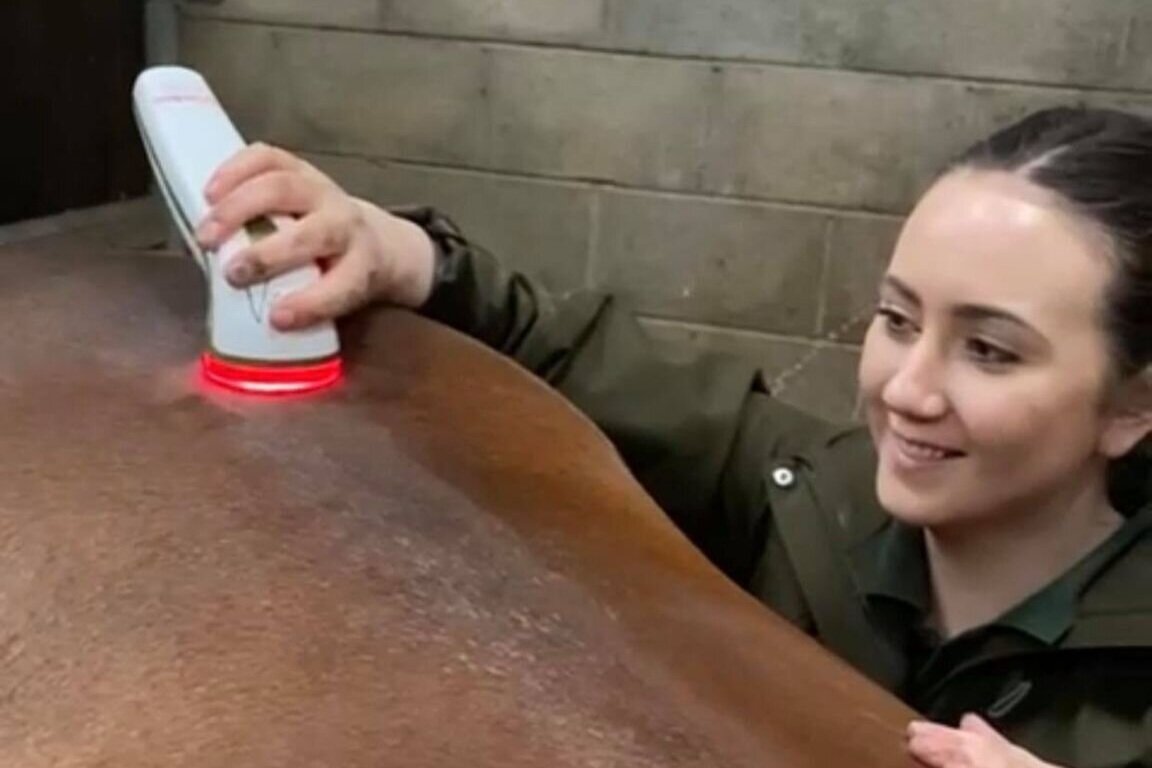
Veterinary Physiotherapy Services
-
Initial Assessment
A full, holistic assessment of your horse will be completed; this may include static observations, dynamic observations (in-hand, lungeing and riding), and palpation. A treatment plan will then be formed that is completely individually tailored to yours and your horses needs and the first treatment will be completed at the initial assessment.

-
Treatment Appointment
Once an initial assessment and treatment plan has been formed we can consider how often you horse will need physiotherapy (the frequency can depend on a number of factors like age, work load and injuries). Treatment appointments can include any number of the modalities as explained below.

-
Competition Performance Enhancement
As an FEI Permitted Equine Therapist I am able to travel to meet you and your horse at competitions so that I can provide pre- and post- competition treatments that aims to enhance your horses performance by: improving suppleness , increasing joint/limb range of motion, and ensuring that they are at their very best before they go out to compete.

Massage
Deep massage techniques target damaged and fatigued tissue (muscles, fascia, ligaments, and tendons).
Horses that resent tack (i.e. are “girthy” or “cold backed”) are typically trying to show that they have pain. This usually stems from the poll area and down their Brachiocephalicus muscles (down their neck), to their Longissiums Dorsi muscle which runs the entire length of the back. And those horses that appear “girthy” may have pain through their Pectoral muscles that lie beneath the girth.
Pressure points can appear in these areas which can be remedied by use of deep massage manipulation therapies. Muscles can also become tight and painful through work load increase, or if a horse changes its gait to compensate for other injuries; these can be loosened off to remove pain by use of massage.
Massage can also help to relieve swelling/fluid build up (like “filled legs”). Massage works with the lymphatic system to clear away the swelling quicker that it would naturally.
Stretching
Warm tissues, that has been prepared by massage or light work, can be manipulated to lengthen and relax; resulting in a more fluid and supple movement of the horse.
Baited stretches (AKA carrot stretches) loosen the neck and back muscles so that a horse can carry itself in a better outline. Baited stretches also target the horses core so that they are able to work ‘over their back’ better.
Different leg stretches target specific muscles to aid in the relaxation of hypertonic and sore muscles, in a similar way to massage. A combination of the two techniques can result in greater range of motion of the limbs, thus increasing stride lengths.
Tail pulls are another form of stretch. Horses typically enjoy the sensation and lean into the manipulation. This techniques stretches out and releases the Longissimus Dorsi muscle that runs the entire length of the back and often gets painful trigger points within it due to the nature of the saddle being in contact with it.
Remedial Exercise
With extensive experience with a range of horses that participate in a number of disciplines, I am very knowledgeable about how horses need to be able to move and use their muscles to succeed in competition.
Individual exercise plans will be given to each client to target certain muscles and areas to build muscle, increase suppleness and get the best out of the horse.
Dependant on the severity of injury/stage of work that a horse is at, there will be elements of in-hand work and ridden work.
In-hand work may include elements of up/down hill work, lateral work, backward work and also lungeing. Lungeing work can incorporate the use of different aids (side reins, equi-ami, etc.).
Both ridden and in-hand work will often include pole work, if these are available, as they are an invaluable tool for horses. They encourage horses to stretch down and over their backs, work in a supple outline, and they also increase the range of motion in their leg joints as they must pick their feet up over the poles.
Kinesiology Tape
First used on human patients in Japan by acupuncturists and chiropractors, kinesiology tape has numerous qualities that can be used by equines and equestrians to improve sports performance by activating the nervous and circulatory systems to encourage healing in the treatment of:
Injured muscles
Swelling/oedema
Tendon and ligament lesions
Lymphoedema
Kinesiology is renowned for its therapeutic properties that help with the reduction of pain sensation, promoting circulation, reducing bruising, and helping with biomechanical and postural dysfunction. RockTape have developed an extra sticky tape that is suitable for the equine patient, and it is this brand that I personally use in conjunction with other manual and electrotherapies.

Electrotherapies
LASER, Ultrasound and TENS therapy.
LASER Therapy
This electrotherapy machine enhances particular properties of light energy. The targeted tissue absorbs the energy emitted by the LASER and it delivers enough energy to the tissue to cause molecular changes. These molecular changes result in many changes to the cells which can have positive effects. There is a lot of research that backs up the use of LASER therapy for a range of conditions, such as:
Open wounds
There is evidence to suggest that LASER therapy can be used to treat ulcers, pressure sores and wounds and accelerates their healing.
Inflammation/swelling
Trials that involved the use of LASER therapy have shown positive trends in the reduction of inflammation where LASER was used as a treatment modality.
Soft tissue injuries
With the correct dosage of LASER, to target the tissue at the correct depth, LASER therapy can speed up the recovery of a range of soft tissue injuries (including tendon/ligament lesions and tears and muscle injuries).
Pain
The main application of LASER therapy is to reduce pain levels. LASER can affect nerve conduction and so can reduce the pain experienced by a horse when used in the correct area.
Ultrasound Therapy
Different to diagnostic ultrasound, therapeutic ultrasound uses sound waves/energy to have biochemical effects on biological tissue.
The main benefits of therapeutic ultrasound are:
Pain relief
Decreased joint stiffness
Increased blood flow
Stimulation of tissue regeneration and repair
TENS Therapy
On application of a TENS machine, electrical stimulation is delivered in order to excite the sensory nerves. This, in turn, stimulates either the pain gate mechanism and/or the opioid system which will give a degree of symptomatic pain relief.
Extensive research is in place to evidence the pain relieving properties of TENS for both chronic and acute cases.
TENS is delivered from a small hand held device, that is powered by batteries, to the tissue via electrodes over conductive gel. This treatment technique is non-invasive and has fewer side effects than traditional pain relieving drug treatment options.
This small, pain relieving miracle machine has numerous applications and can help in a range of cases. As well as reducing pain, this little machine has a range of other functions that can help with building muscle strength and reducing muscle spasms, when put on the right settings.
Areas I cover
I work with vets, horse owners and livery yards based all over the North West including Greater Manchester, Lancashire, Cheshire, Merseyside, and Yorkshire.
Lancashire
Including Preston, Leyland, Chorley, Blackpool, Blackburn, Wigan and Burnley
Greater Manchester
Including Ashton-Under-Lyne, Oldham, Tameside, Central Manchester, Stockport, Stretford and Prestwich
West Yorkshire
Including Bradford, Calderdale, Kirklees, Leeds and Wakefield
Cheshire
Including Stockport, Altrincham, Wilmslow, Alderly Edge, Hazel Grove, Wythenshawe, Knutsford and Marple
Cumbria
Including Barrow, Kendal, Windermere, Coniston, Keswick, Penrith and Carlisle
Merseyside
Including Liverpool, St Helens, Haydock, Aintree, Crosby, Southport and Ormskirk.
Does your horse require any treatment?
Contact me today to arrange a consultation.







